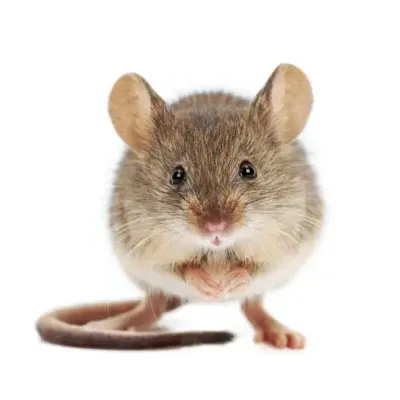About House Mice

Appearance: Short gray or light brown fur with cream or off-white underside; faint little hairs on ears and tail; around 2 1/2 – 3 3/4 inches in length including tail
Region: Found throughout the U.S.
Diet: As opportunistic feeders, house mice will eat from any food source available, but prefer nuts, seeds, and insects.
Habitat: House mice tend to live in structures but can survive outdoors in grassland or farmland. They prefer to nest in dark, secluded areas and build nests out of paper, cotton, insulation, and packing materials. While nocturnal, house mice can be spotted in the house during the day as they are quite curious about changes in their habitat. Due to how cautious they can be, house mice are difficult to control.
Threats: House mice can pose serious health threats by contaminating food and surfaces, and spreading diseases and fleas.
Control: Since mice hide in clutter and make nests out of packing material, reduce the number of boxes you have in your home and store them off the floor. Make sure there are no entry points and seal cracks or crevices with caulk. Don’t overlook proper drainage at the foundation and always install gutters or diverts which will channel water away from the structure to prevent ideal conditions in which house mice can nest.
